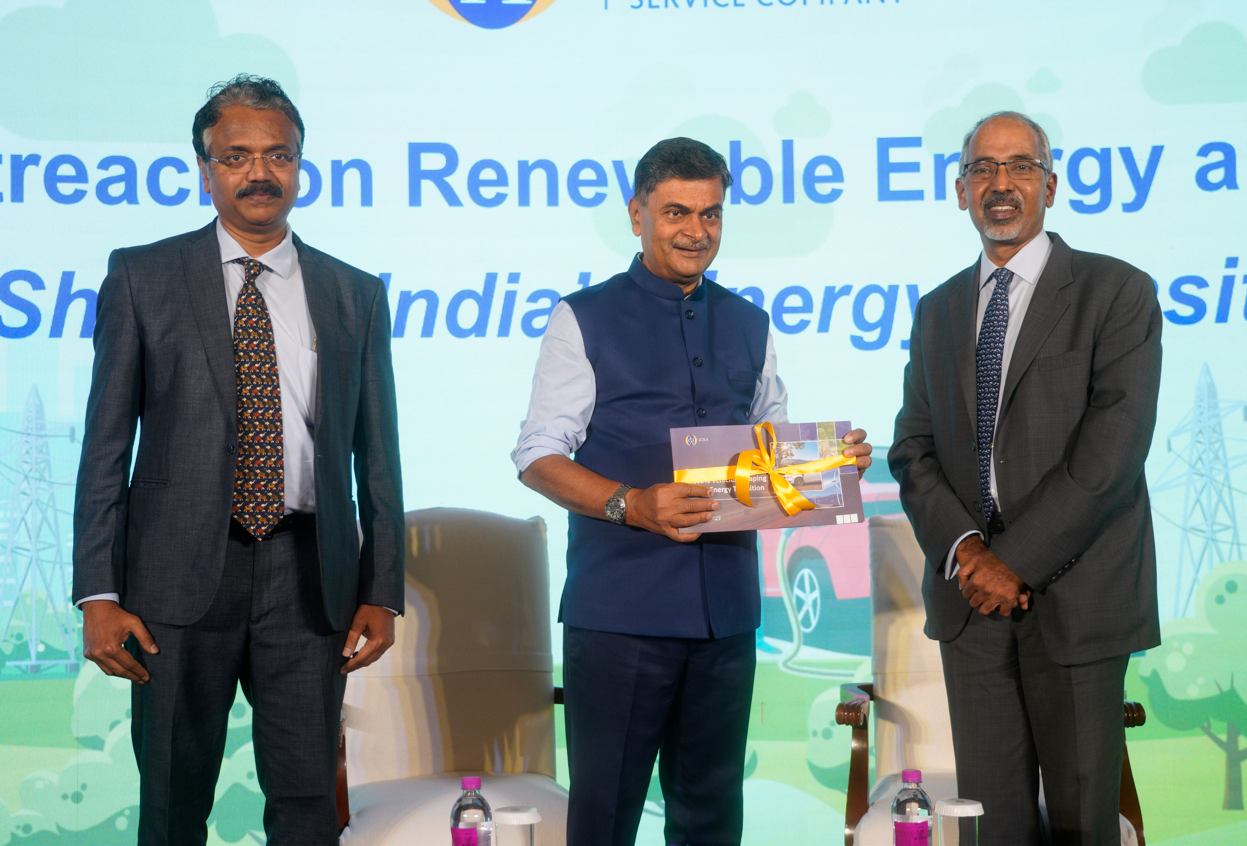
New Delhi: India is poised to become a global powerhouse in renewable energy, including green hydrogen, fostering a robust ecosystem. With one of the largest manufacturing ecosystems in wind energy and rapidly growing capacity in solar, India is the world leader in this regard.
“With considerable existing solar manufacturing capacity and even larger capacities under construction, including polysilicon, India is set to emerge as one of the largest solar module manufacturers. Also, India has achieved the NDC target of 40% capacity from renewable sources ahead of the timeline and is on course to achieve the 50% capacity share of RE, well ahead of the NDC timeline of 2030,” Raj Kumar Singh, Union Minister for Power, New & Renewable Energy, said at an ICRA event held in Delhi.
India is one of the fastest-growing economies in the world, yet the per capita emissions of greenhouse gases are substantially lower than the world average. The country is striving to achieve a fine balance between meeting its surging energy needs and reducing carbon emissions. India remains steadfast in its commitment to sustainable growth, renewable energy expansion, and electric vehicle adoption
“By strategically balancing economic growth with environmental consciousness, the nation is determined to carve a brighter, greener future for generations to come,” he added.
Ramnath Krishnan, MD & Group CEO, ICRA Limited, said, “India’s clean energy revolution has witnessed significant progress over the past decade, fueled by strong policy support from the Government of India and enhanced tariff competitiveness of solar and wind power. This momentum has enabled a substantial increase in renewable energy (RE) capacity. The recent announcement of a bidding trajectory of 50 GW per annum over the period from FY2024 to FY2028 sets a clear path in moving towards achieving the ambitious 500-GW non-fossil fuel-based capacity target by the government for 2030.”
“While the trajectory shows promise, timely completion of the tendering process, risk mitigation during execution, and augmentation of the domestic solar supply chain are paramount to realizing the capacity target. ICRA anticipates a rise in the share of renewable energy plus hydro in the electricity generation mix from the current 23% in FY2023 to approximately 40% by FY2030. In light of this projection, the development of adequate energy storage capacities at a competitive cost assumes greater significance to mitigate intermittency risks associated with higher levels of RE generation,” he added.
Momentum in EV adoption: The adoption of electric vehicles (EVs) in India has also witnessed significant momentum in recent years, bolstered by proactive measures taken by the Government of India and various state governments in both demand and supply aspects. The people are increasingly aware of the environmental benefits of EVs, leading to a surge in demand. Original equipment manufacturers (OEMs) are actively expanding their EV product portfolios, now offering longer-range options to meet consumer preferences, ICRA said.
Moreover, the gradual improvement in charging infrastructure and investments in developing a local vendor ecosystem has further contributed to the rapid adoption of EVs. Impressive investments of at least INR 70,000 crore for the OEM segment and INR 30,000 crore for the components segment have already been announced. This collective effort is expected to drive a healthy rise in EV penetration across India, particularly in the e-2W, e-3W, and e-bus segments. ICRA estimates e-2W penetration to reach 10-12% of new vehicle sales by FY2025, while e-3W and e-buses are expected to reach 14-16% and 11-13%, respectively.
To sustain and accelerate EV adoption, continued technological advancements to reduce import dependence, expand consumer choices, and ensure the availability of adequate financing options are critical factors.

